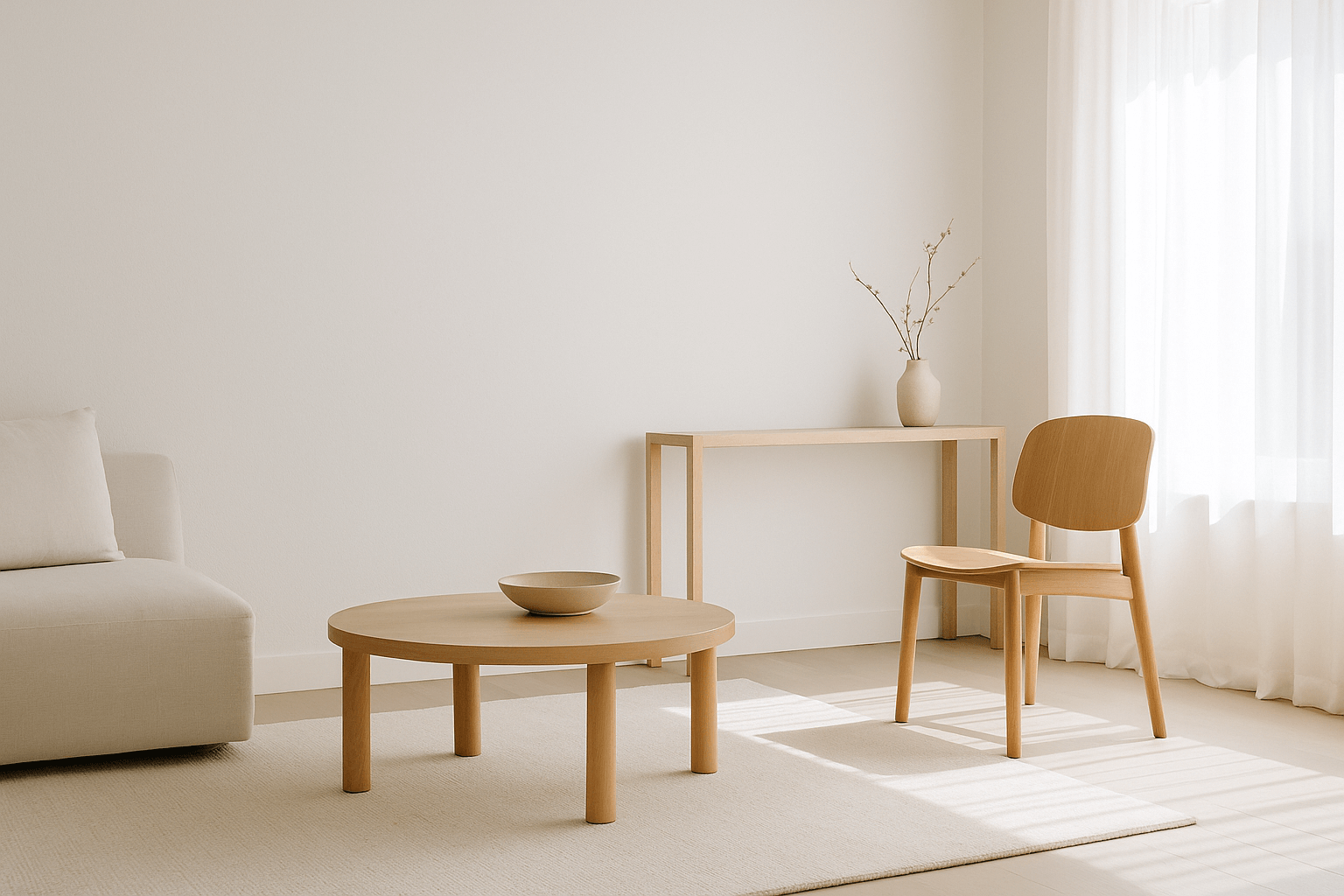Beyond Aesthetics: The Emotional Side of Minimalism
Minimalist interiors are often praised for their clean lines and visual simplicity—but what keeps people coming back to minimalism isn't just how it looks.
It’s how it feels.
When done well, minimalist design creates a sense of calm, grounding, and presence. It clears space not only on your shelves, but in your mind. This deeper effect is what we call emotional minimalism.
What Is Emotional Minimalism?
Emotional minimalism is about designing for feeling. It means creating spaces that:
-
Lower anxiety
-
Support stillness
-
Encourage clarity and presence
-
Offer comfort without overstimulation
It’s not just about “less stuff”—it’s about making space for peace.
How to Design for Emotional Calm
1. Choose Calming Materials
Natural materials like linen, wood, stone, and clay have grounding textures that relax the senses. These elements age well, feel soft or solid in the hand, and connect us back to the earth.
2. Use a Muted Palette
Colors affect mood. Stick to warm neutrals, off-whites, soft greys, and earth tones. These shades help lower visual stimulation and bring harmony to your space.
3. Embrace Negative Space
Let objects have room around them. Don’t feel pressure to fill shelves or corners. Empty space invites rest and reflection.
4. Keep Only What Feels Aligned
When choosing what stays in your home, ask:
-
Does this item calm me or energize me?
-
Does it support how I want to feel in this room?
5. Soften Light, Soften Mood
Harsh overhead lights create stress. Use soft table lamps, wall sconces, or paper lanterns to cast a warm, quiet glow. Daylight through sheer curtains is one of the best tools for emotional calm.
Objects Can Carry Energy
In emotional minimalism, we understand that every object in your space has a kind of emotional weight. Some items:
-
Remind you of peace, travel, or growth
-
Ground you in routine (like your morning tea mug)
-
Bring nostalgia or warmth (like a handmade piece)
The goal is to keep only what adds to your emotional landscape—not what clutters it.
Final Thoughts
Minimalist design is about more than appearance—it’s about experience. When we design for emotion, not just aesthetics, we create homes that nurture us every single day.
Emotional minimalism invites you to listen—to how your space makes you feel. Then gently shape it to support stillness, presence, and peace.
















